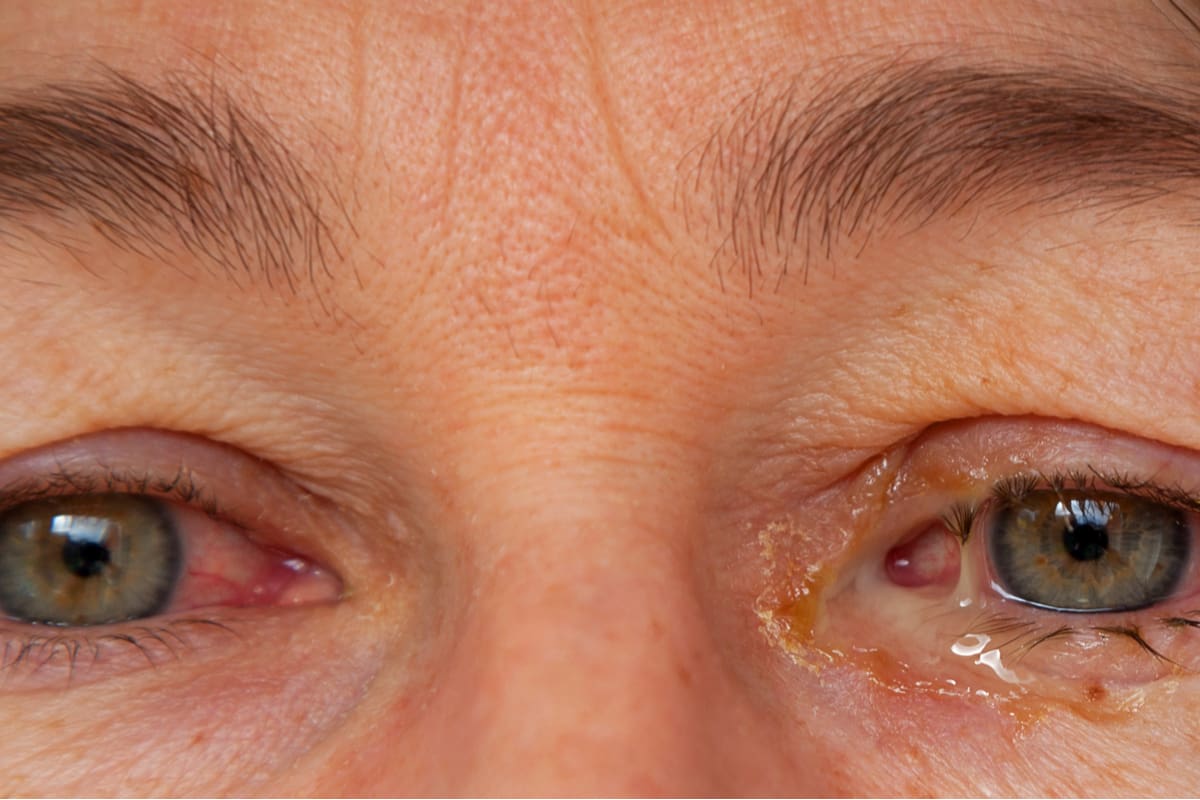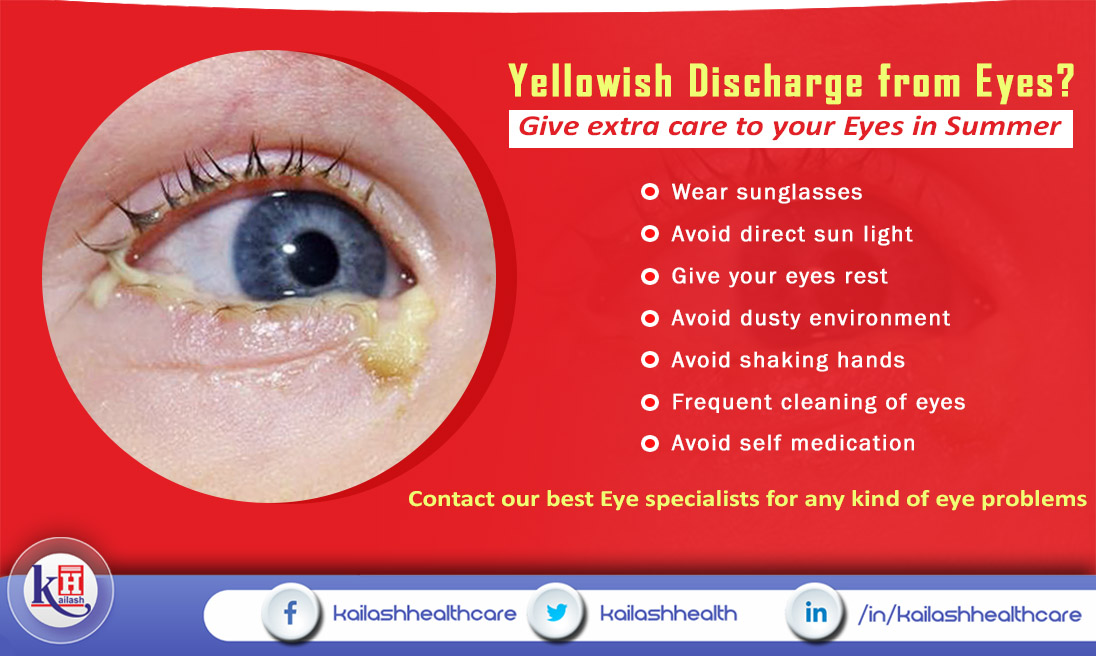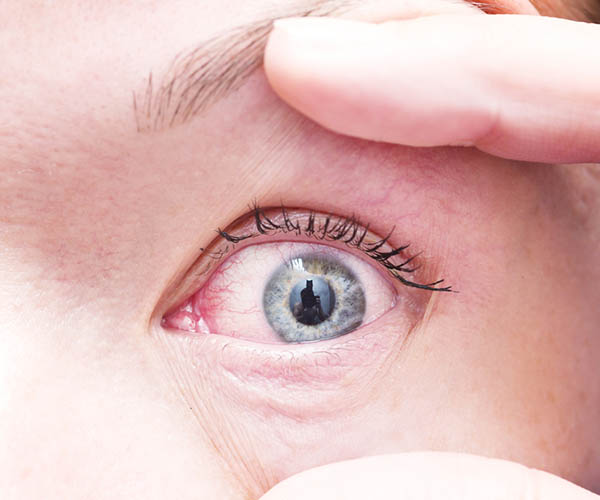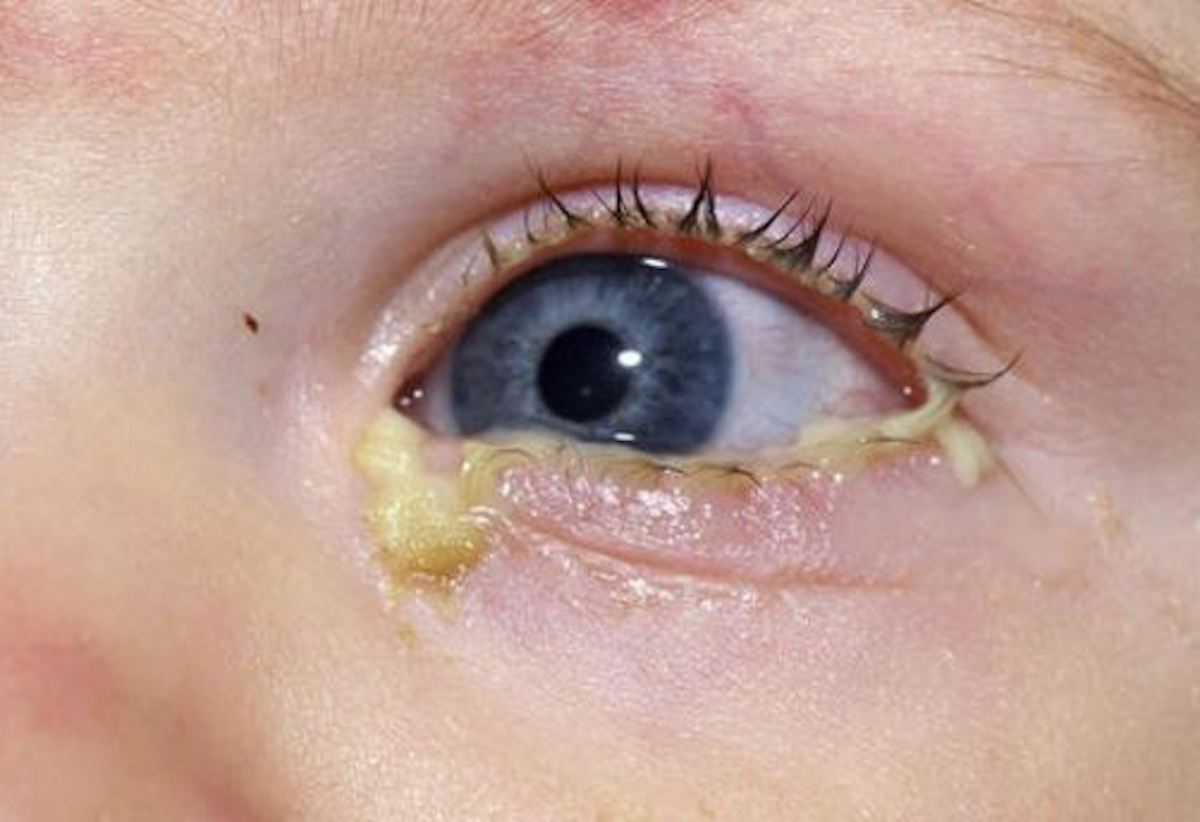Yellowish Discharge From The Eye - It can sometimes be hard, sludgy, or thin after sleeping. This may be caused by chemicals in your eyes, extended contact lense use, irritant in your eye, fungi,. Healthy eye discharge is clear or light yellow. Yellow discharge is usually due to bacterial infection, which may accompany tear duct obstruction, blepharitis, meibomian gland dysfunction, a stye or bacterial conjunctivitis. Notice if your eye discharge has an. If the mucus from your eyes is very thick, dark yellow, green, or occurs. Eye discharge is a product of your eye cleaning itself. Yellow discharge from the eyes is your body trying to fight an infections. It is characterized by thick, yellowish or greenish secretions that may form crusts around the eyes, particularly after. Some eye gunk is normal, especially in the morning.
Yellow discharge is usually due to bacterial infection, which may accompany tear duct obstruction, blepharitis, meibomian gland dysfunction, a stye or bacterial conjunctivitis. This may be caused by chemicals in your eyes, extended contact lense use, irritant in your eye, fungi,. Notice if your eye discharge has an. Yellow eye discharge, also known as purulent discharge, is a common symptom of various eye conditions. It can sometimes be hard, sludgy, or thin after sleeping. It is characterized by thick, yellowish or greenish secretions that may form crusts around the eyes, particularly after. If the mucus from your eyes is very thick, dark yellow, green, or occurs. Yellow discharge from the eyes is your body trying to fight an infections. Healthy eye discharge is clear or light yellow. But having a lot of eye discharge can be a sign of inflammation or infection.
It can sometimes be hard, sludgy, or thin after sleeping. Healthy eye discharge is clear or light yellow. Yellow discharge from the eyes is your body trying to fight an infections. Some eye gunk is normal, especially in the morning. However, it should not be noticeable during the day. This may be caused by chemicals in your eyes, extended contact lense use, irritant in your eye, fungi,. Eye discharge is a product of your eye cleaning itself. It is characterized by thick, yellowish or greenish secretions that may form crusts around the eyes, particularly after. Yellow or white mucus balls in watery tears are. Yellow discharge is usually due to bacterial infection, which may accompany tear duct obstruction, blepharitis, meibomian gland dysfunction, a stye or bacterial conjunctivitis.
Eye Discharge Causes, Associated Conditions, and Treatments 1MD
This may be caused by chemicals in your eyes, extended contact lense use, irritant in your eye, fungi,. It can sometimes be hard, sludgy, or thin after sleeping. Some eye gunk is normal, especially in the morning. Yellow discharge from the eyes is your body trying to fight an infections. However, it should not be noticeable during the day.
Eye Discharge Causes, Treatment, and More
This may be caused by chemicals in your eyes, extended contact lense use, irritant in your eye, fungi,. However, it should not be noticeable during the day. Yellow discharge from the eyes is your body trying to fight an infections. It can sometimes be hard, sludgy, or thin after sleeping. But having a lot of eye discharge can be a.
Yellowish Discharge from Eyes? Give Extra care to your Eyes in Summer
Yellow discharge from the eyes is your body trying to fight an infections. Yellow or white mucus balls in watery tears are. It is characterized by thick, yellowish or greenish secretions that may form crusts around the eyes, particularly after. If the mucus from your eyes is very thick, dark yellow, green, or occurs. However, it should not be noticeable.
Yellow Discharge From Eye
If the mucus from your eyes is very thick, dark yellow, green, or occurs. Eye discharge is a product of your eye cleaning itself. It can sometimes be hard, sludgy, or thin after sleeping. But having a lot of eye discharge can be a sign of inflammation or infection. Yellow discharge is usually due to bacterial infection, which may accompany.
Yellow Eye Discharge What It Means And When To Act
Some eye gunk is normal, especially in the morning. Yellow discharge is usually due to bacterial infection, which may accompany tear duct obstruction, blepharitis, meibomian gland dysfunction, a stye or bacterial conjunctivitis. Yellow eye discharge, also known as purulent discharge, is a common symptom of various eye conditions. If the mucus from your eyes is very thick, dark yellow, green,.
A macro view on the eye of a young boy suffering from childhood
This may be caused by chemicals in your eyes, extended contact lense use, irritant in your eye, fungi,. But having a lot of eye discharge can be a sign of inflammation or infection. Yellow or white mucus balls in watery tears are. It can sometimes be hard, sludgy, or thin after sleeping. If the mucus from your eyes is very.
Yellow Discharge From Eye
Yellow or white mucus balls in watery tears are. It is characterized by thick, yellowish or greenish secretions that may form crusts around the eyes, particularly after. Some eye gunk is normal, especially in the morning. Eye discharge is a product of your eye cleaning itself. Yellow eye discharge, also known as purulent discharge, is a common symptom of various.
Understanding Xanthelasma the weird yellow deposits on your eyelids
Healthy eye discharge is clear or light yellow. It is characterized by thick, yellowish or greenish secretions that may form crusts around the eyes, particularly after. It can sometimes be hard, sludgy, or thin after sleeping. But having a lot of eye discharge can be a sign of inflammation or infection. If the mucus from your eyes is very thick,.
Conjunctivitis discharge Stock Videos & Footage HD and 4K Video Clips
But having a lot of eye discharge can be a sign of inflammation or infection. It can sometimes be hard, sludgy, or thin after sleeping. Some eye gunk is normal, especially in the morning. However, it should not be noticeable during the day. Notice if your eye discharge has an.
A case of acute bacterial conjunctivitis with yellowish discharge
Eye discharge is a product of your eye cleaning itself. Yellow discharge from the eyes is your body trying to fight an infections. It can sometimes be hard, sludgy, or thin after sleeping. Notice if your eye discharge has an. If the mucus from your eyes is very thick, dark yellow, green, or occurs.
Healthy Eye Discharge Is Clear Or Light Yellow.
It is characterized by thick, yellowish or greenish secretions that may form crusts around the eyes, particularly after. Yellow discharge from the eyes is your body trying to fight an infections. Yellow or white mucus balls in watery tears are. It can sometimes be hard, sludgy, or thin after sleeping.
Some Eye Gunk Is Normal, Especially In The Morning.
Eye discharge is a product of your eye cleaning itself. This may be caused by chemicals in your eyes, extended contact lense use, irritant in your eye, fungi,. However, it should not be noticeable during the day. If the mucus from your eyes is very thick, dark yellow, green, or occurs.
But Having A Lot Of Eye Discharge Can Be A Sign Of Inflammation Or Infection.
Notice if your eye discharge has an. Yellow eye discharge, also known as purulent discharge, is a common symptom of various eye conditions. Yellow discharge is usually due to bacterial infection, which may accompany tear duct obstruction, blepharitis, meibomian gland dysfunction, a stye or bacterial conjunctivitis.









